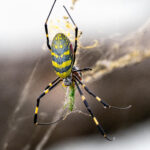Are tiny flying bugs pestering you in your kitchen? You might be dealing with fruit flies! These common household pests can be annoying, but thankfully, eliminating them is simple and doesn’t require expensive solutions or harsh chemicals. In fact, you likely have everything you need right in your pantry to create effective traps.
Recently, we experienced a fruit fly invasion in our home – a rare occurrence in the past four years. This prompted us to test seven different methods to get rid of them. We documented everything meticulously, even using a spreadsheet! Now, we’re sharing the best DIY fruit fly traps and how to make them, all using natural, household ingredients. These methods are incredibly DIY-friendly and chemical-free, and if you prefer a humane approach, you can even release the captured fruit flies outdoors. We’ll also provide essential tips to prevent future infestations in the first place.
Understanding Fruit Flies
Fruit flies, as their name suggests, are small flying insects that are strongly attracted to ripe and fermenting fruits and vegetables. They are also drawn to sugary substances like beer, wine, and juice. You’ll often find them buzzing around fruit bowls, garbage disposals, trash cans, and even sink drains. They are tiny, about the size of a grain of rice, and resemble small, tan or brownish houseflies with distinctive red eyes. Fruit flies are most prevalent during the warmer months of summer and fall when fruits are abundant.
A fruit fly problem can start with just a few flies hitching a ride on your groceries. However, female fruit flies can lay hundreds of eggs in their short lifespan, and these eggs can hatch in as little as 12 hours. The flies can reach adulthood within days, meaning a small number of pests can quickly explode into a large infestation. This rapid reproduction cycle is why it’s crucial to address a fruit fly problem as quickly as possible.
Identifying Fruit Flies: Fruit Flies vs. Fungus Gnats vs. Drain Flies
It’s easy to mistake fruit flies for other small flying insects commonly found in homes, especially fungus gnats and drain flies. Correctly identifying the pest is key to choosing the right elimination method. The easiest way to differentiate them is by where you see them and what insect they look like.
- Fruit flies: Resemble small flies. Found near fruit bowls, trash cans, and food sources.
- Drain flies: Look like small, fuzzy moths. Typically seen near sinks and drains.
- Fungus gnats: Look like small mosquitoes. Usually found around houseplants, as they breed in damp potting soil.
If you’re uncertain, try one of the traps described below. If it attracts the insects in your home, you’re likely dealing with fruit flies!
4 Simple DIY Fruit Fly Traps
Getting rid of fruit flies doesn’t have to be complicated or expensive. You only need a few common household items and a bit of patience. The basic principle of each trap is the same: attract the fruit flies and then prevent their escape. We tested four effective DIY methods and found a clear winner. Since each method uses items you probably already have at home, trying more than one won’t hurt. Consider yourself a fruit fly scientist – it can be surprisingly engaging! Here are the first four methods we tested:
- Funnel Trap
- Plastic Wrap Trap
- Dish Soap Trap
- Rotting Fruit Trap
We’ll detail each method below and share our verdict on effectiveness later. Keep in mind that some traps work faster than others, and it may take several days to completely eliminate your fruit fly problem with any of these techniques.
1. The Paper Funnel Fruit Fly Trap
This trap uses a paper funnel to guide fruit flies into a container. The small opening at the bottom of the funnel makes it easy for them to enter but difficult to escape.
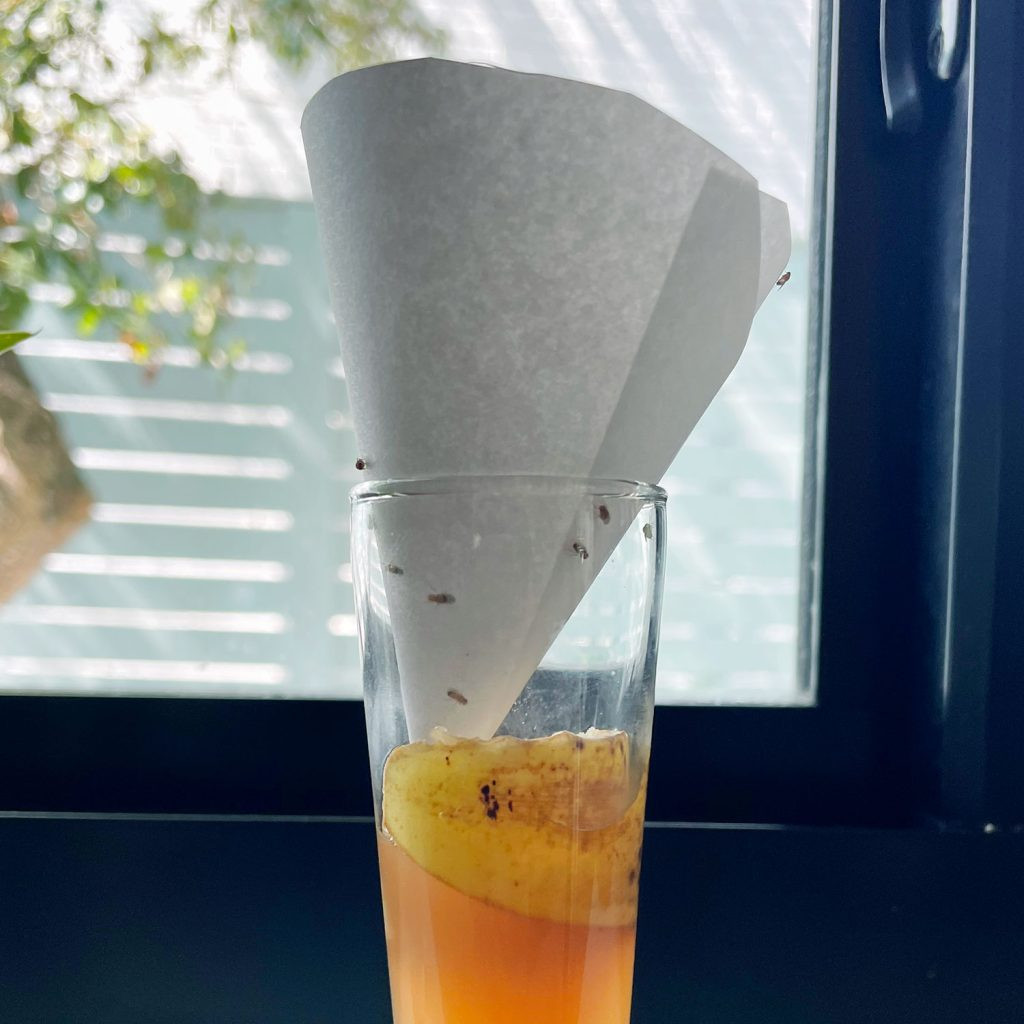 DIY Fruit Fly Trap With Paper Funnel
DIY Fruit Fly Trap With Paper Funnel
Supplies:
- Small, clear jar, cup, or container (narrow opening preferred)
- Piece of paper or cardstock
- Tape
- Scissors
- Apple cider vinegar (ACV)
Instructions:
- Choose your container: Select a small, clear container like a clean food jar or a plastic bottle. A narrow opening is beneficial for this trap.
- Add apple cider vinegar: Pour a small amount of apple cider vinegar, old beer, or wine into the bottom of the container. The enticing smell will attract the fruit flies.
- Make your funnel: Roll a piece of paper or cardstock into a cone shape with a tiny opening at the tip, about the size of a grain of rice. Secure the cone shape with tape. You can create the small opening by cutting the tip after forming the cone if that’s easier.
- Position the funnel: Place the paper funnel into the container’s opening. Adjust the funnel so it sits securely on the rim of the container without touching the liquid. Ensure there are no gaps around the edges where flies could escape.
- Humane release (optional): To release the trapped flies outdoors, carefully carry the entire trap outside, ensuring the funnel stays in place. Remove the funnel to allow the flies to fly away.
While store-bought funnels can be used, their wider openings may allow more fruit flies to escape, making homemade paper funnels more effective for this trap.
2. The Plastic Wrap Fruit Fly Trap
Similar to the funnel trap, this method attracts fruit flies with apple cider vinegar. They enter through small holes poked in plastic wrap stretched tightly over the container’s opening, but then struggle to find their way back out.
Supplies:
- Small, clear jar, cup, or container
- Rubber band
- Plastic wrap or plastic bag
- Toothpick
- Apple cider vinegar (ACV)
Instructions:
- Select your container: Choose a small, clear jar, cup, or glass container. Almost any size works, and clarity helps you monitor your trap’s success. You can even use an old can.
- Add apple cider vinegar: Pour apple cider vinegar into the container. The sweet scent is irresistible to fruit flies. Old beer or wine can also be used, but avoid regular white vinegar.
- Cover with plastic wrap: Stretch plastic wrap tightly over the container’s opening and secure it with a rubber band. Saran wrap works well, or you can use a piece cut from a plastic bag.
- Poke small holes: Use a toothpick to carefully poke a few small holes in the plastic wrap. The holes should be just large enough for a fruit fly to enter.
- Humane release (optional): To release the trapped flies, carefully take the trap outside without removing the plastic wrap. Then, remove the plastic wrap to let them fly away.
Alternatively, you can create a similar trap using a metal jar lid. Use a hammer and nail to puncture a small hole in the lid of a mason jar or old food jar.
3. The Dish Soap Fruit Fly Trap
This trap is simpler than the previous two, as it doesn’t require a cover. Instead, it uses dish soap to break the surface tension of the liquid, trapping the fruit flies. Note: Fruit flies trapped in this method cannot be released as the soap affects them.
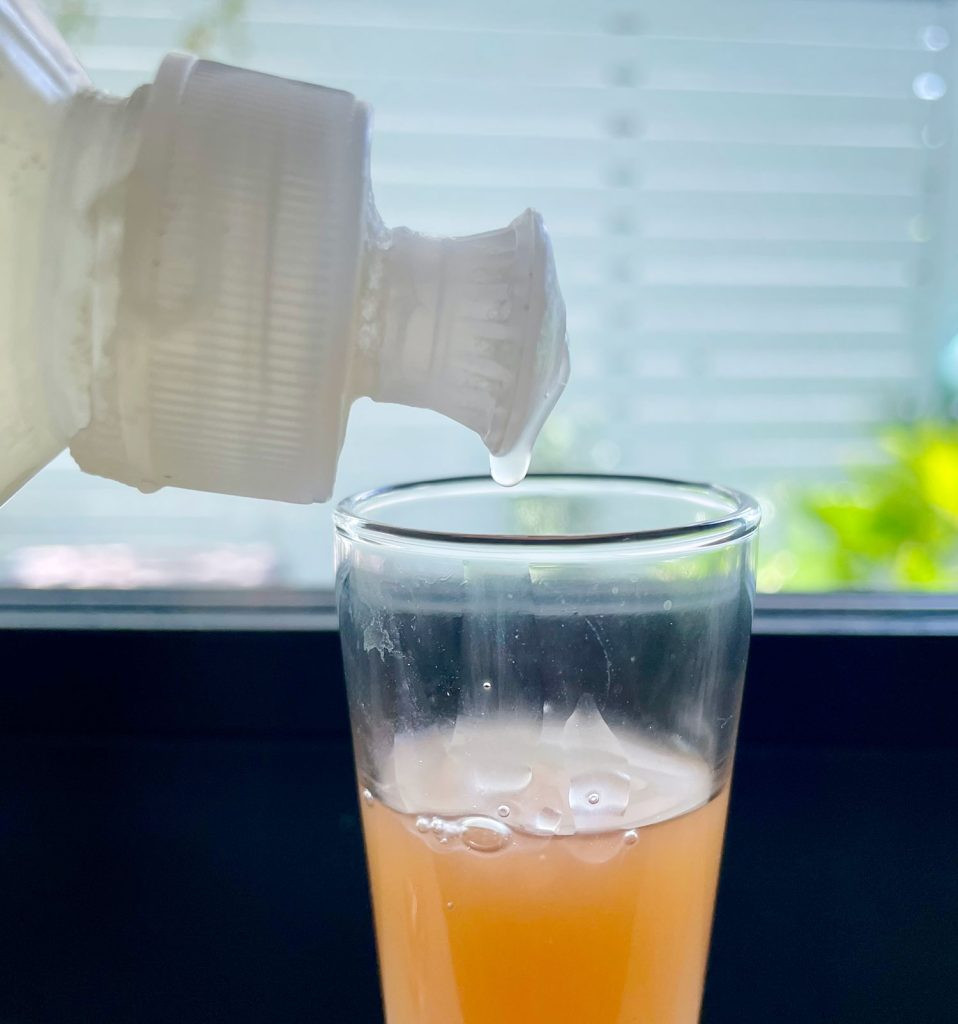 Dripping Dish Soap Into Apple Cider Vinegar For DIY Fruit Fly Trap
Dripping Dish Soap Into Apple Cider Vinegar For DIY Fruit Fly Trap
Supplies:
- Small container, bowl, or dish
- Dish soap
- Apple cider vinegar (ACV)
Instructions:
- Pour apple cider vinegar: Fill the bottom of a small container, bowl, or dish with apple cider vinegar. The scent will lure the fruit flies.
- Add dish soap: Add several drops of dish soap to the apple cider vinegar and gently mix. The soap reduces the surface tension, causing flies to sink when they land.
This dish soap technique can also be combined with the plastic wrap or funnel traps for added effectiveness. Simply add dish soap to the apple cider vinegar before covering the container.
4. The Rotting Fruit Bait Trap
For this trap, we replaced apple cider vinegar with what fruit flies love even more: actual fruit!
Supplies:
- Small glass jar, cup, or container
- Plastic wrap or paper funnel (depending on your chosen trap type)
- A small piece of ripe or rotting fruit, like a banana peel or apple slice
To make a rotting fruit trap, simply substitute apple cider vinegar with a piece of banana peel, apple slice, or peach in either the Plastic Wrap Trap or Funnel Trap method. You can also add a fruit scrap to your apple cider vinegar traps for enhanced attraction. Remember to replace the fruit scrap every day or two to prevent unpleasant odors in your kitchen.
Determining the Best Fruit Fly Trap
As shown in our experiment, we tested four different DIY traps to evaluate their effectiveness. The homemade traps we tested were variations combining the techniques:
- Plastic Wrap Trap with banana peel
- Funnel Trap with ACV + banana peel
- Plastic Wrap Trap with ACV + soap
- Dish Soap Trap with ACV
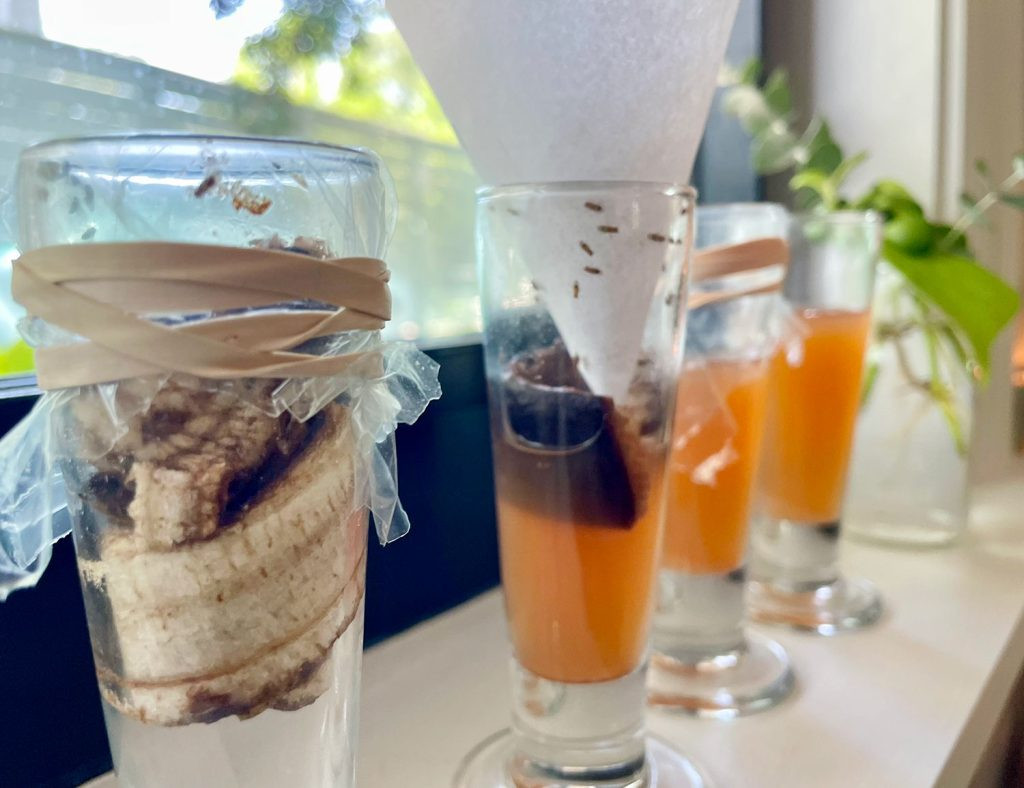 4 DIY Fruit Fly Traps Close Up
4 DIY Fruit Fly Traps Close Up
Our results indicated that the lure was more critical than the trap type. Traps using banana peel significantly outperformed those using only apple cider vinegar. The Plastic Wrap Traps were almost identical in design, but the one baited with banana peel caught considerably more fruit flies than the ACV and soap trap. Perhaps apple cider vinegar is less appealing when real fruit is present?
Based on our findings, we recommend adding a fruit scrap to any trap you set up. We slightly preferred the plastic wrap trap because it was easier to assemble and less prone to accidental spills. We did knock over the funnel trap once, releasing some trapped flies back into the kitchen – oops!
What Attracts Fruit Flies the Most?
Intrigued by our initial findings, we further investigated which type of fruit works best as bait. We tested three readily available fruits: banana peel, apple slices, and a strawberry. We placed each fruit in a separate Plastic Wrap Trap, side-by-side on the counter, for 24 hours.
While the banana peel initially seemed promising (being the ripest at the start), strawberries proved to be the most attractive to fruit flies. Banana peel still caught a good number, but as the strawberry ripened further, it attracted even more flies. Apple slices, surprisingly, didn’t catch any fruit flies!
Store-Bought Fruit Fly Traps: A Convenient Alternative
If DIY traps aren’t working for you, or if you prefer a more convenient solution, pre-made fruit fly traps are available for purchase. These traps have thousands of positive reviews and are generally inexpensive, costing under $20. They might be a worthwhile option if you want a trap that catches a broader range of flying insects or prefer a more discreet trap compared to homemade versions.
 Collage of Storebought Fruit Fly Traps
Collage of Storebought Fruit Fly Traps
During our experiment, we also tested Terro Fruit Fly Traps to compare their performance to our homemade traps. We placed a Terro trap next to our banana and strawberry traps for 24 hours.
Again, our homemade strawberry trap performed best, followed closely by the banana peel trap. The store-bought trap caught only one fruit fly in the initial 24 hours. HOWEVER…
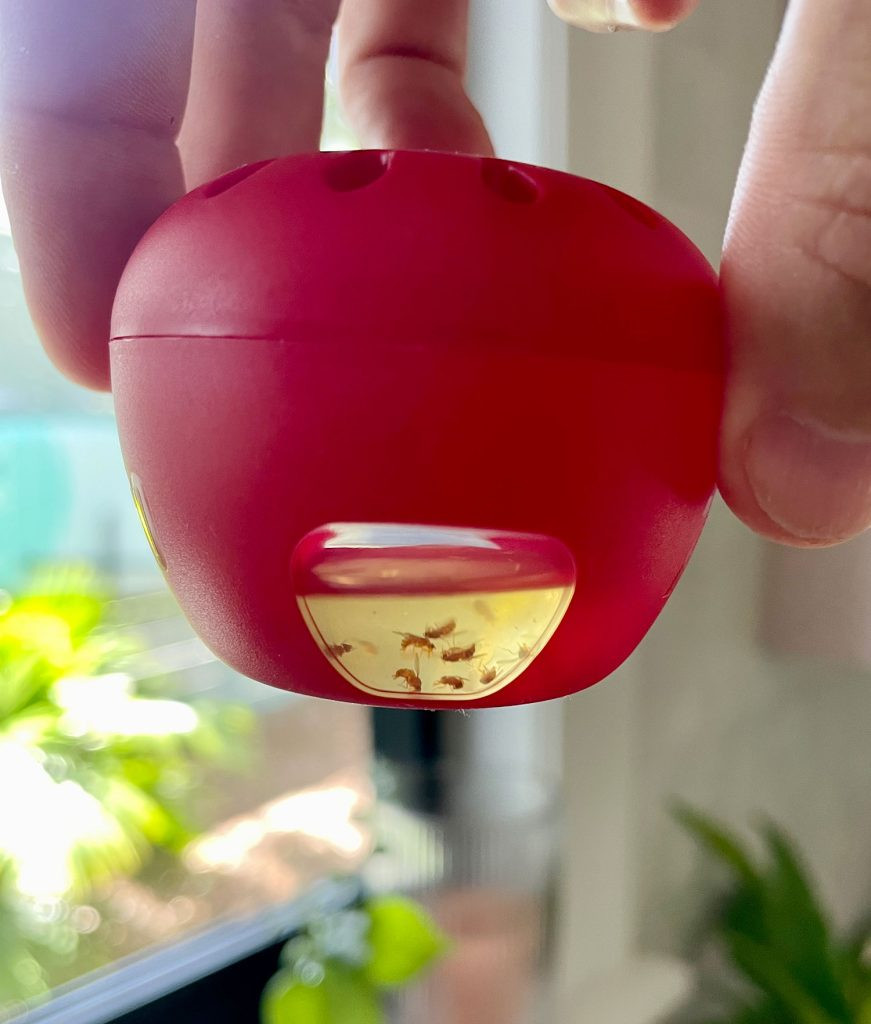 Terro Fruit Fly Trap With Dead Fruit Flies Visible
Terro Fruit Fly Trap With Dead Fruit Flies Visible
To ensure a fair comparison, we removed our DIY traps and left the store-bought trap out for another 24 hours. Over this extended period, the Terro trap effectively captured a significant number of fruit flies. So, store-bought traps do work, but they may not be as immediately effective or as fast-acting as homemade traps. Our conclusion? Store-bought traps are a good option if you want a more discreet solution, especially for long-term use. However, for quickly getting rid of fruit flies, homemade traps are the best and most immediate solution!
Preventing Fruit Flies: Simple Steps to Keep Them Away
While eliminating fruit flies is relatively easy, preventing them from infesting your home in the first place is ideal. Here are some simple preventative measures:
- Maintain clean kitchen surfaces: Regularly wipe down kitchen counters, stovetops, tables, and any surfaces that might have food residue or spills. Fruit flies are strongly attracted to fruit, sugary liquids, and alcohol, so prompt cleaning is essential!
- Take out trash frequently: Food scraps left in your garbage cans, especially overnight, can quickly become breeding grounds for fruit flies.
- Dispose of overripe fruit promptly: Monitor your fruit bowl and discard any browning or rotting fruits like apples and bananas before they become a problem.
- Wash produce immediately after bringing it home: Washing fruits and vegetables (except delicate berries) as soon as you get home from the store can remove any fruit fly eggs or larvae that may be present.
- Store produce in the refrigerator when possible: Fruit flies don’t thrive in cold environments, so refrigerating fruits and vegetables is an effective preventative measure.
- Clean your sink drain regularly: Food particles accumulating in your sink drain can attract fruit flies. Run your garbage disposal and flush the drain with hot water and cleaner regularly.
Finally, remember not to panic if you spot fruit flies in your home. While prompt action is needed to prevent a full-blown infestation, the DIY solutions and preventative tips outlined here are easy, effective, and fast-acting. You might even find yourself enjoying the process of becoming a fruit fly scientist, just like we did!
*This post contains affiliate links, so we may earn a small commission when you make a purchase through links on our site at no additional cost to you.
